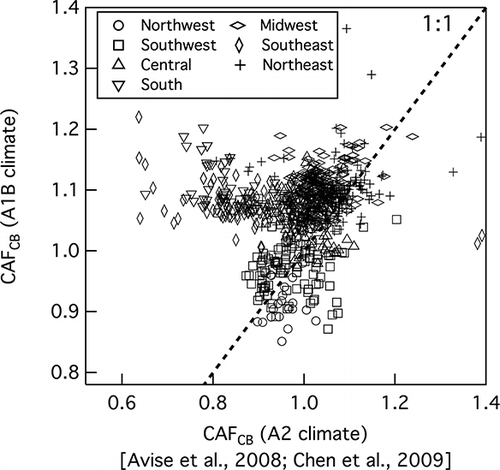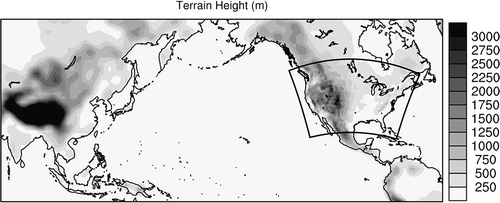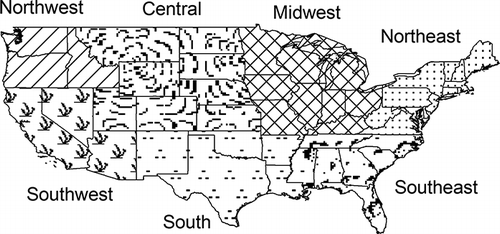Figures & data
Figure 3. Percent change in continental U.S. emissions from the present-day to the 2050s by region. BVOC represents biogenic VOC emissions that are allowed to change with the future climate.
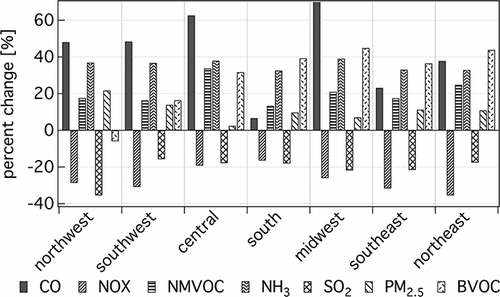
Table 1. Matrix of 36-km CONUS domain CMAQ simulations
Figure 4. Simulated change in meteorological parameters due to climate change. Percent change in temperature (˚C) and PBL are from average daily maximum values, while water vapor, precipitation, insolation, and wind speed are from average values.
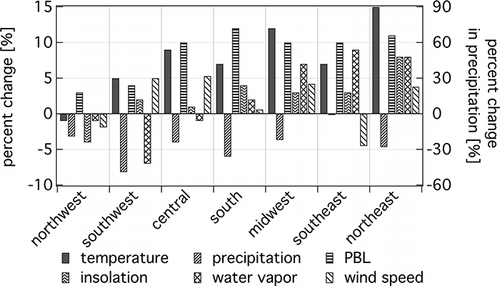
Figure 5. Observed (open dark circles) and modeled (open gray circles) daily maximum hourly ozone as a function of summertime daily maximum hourly temperature at 72 CASTNET sites. The data have been grouped by site location based on the region definitions in The observed and modeled linear best-fit lines are shown as solid and dashed, respectively. The slope of the linear best-fit is shown in the upper-left corner of each tile [ppb/˚C].
![Figure 5. Observed (open dark circles) and modeled (open gray circles) daily maximum hourly ozone as a function of summertime daily maximum hourly temperature at 72 CASTNET sites. The data have been grouped by site location based on the region definitions in Figure 2. The observed and modeled linear best-fit lines are shown as solid and dashed, respectively. The slope of the linear best-fit is shown in the upper-left corner of each tile [ppb/˚C].](/cms/asset/3026df6a-78e4-43b6-926a-263377978c26/uawm_a_696531_o_f0005g.gif)
Figure 6. Simulated change in average daily maximum temperature and the corresponding change in average daily maximum 1-hr ozone at the 72 CASTNET sites when biogenic emissions are held constant (A1B_Met; solid circles) and when biogenic emissions are allowed to change in response to the future climate (A1B_M; open squares).

Table 2. Summary of RRFE by region
Figure 7. Spatial map of the RRFE for the 1135 ozone monitoring locations in which the CD_Base case had at least one day where the daily maximum 8-hr ozone exceeded 75 ppb. Values less than one imply a reduction in daily maximum 8-hr ozone, while values greater than one imply an increase in daily maximum 8-hr ozone when anthropogenic emissions are reduced as shown in
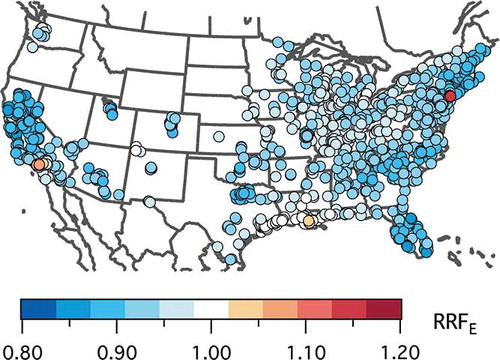
Table 3. Summary of climate-adjusted RRFs ( Equationeqs (4) and Equation(5)) by region
Figure 8. Climate adjustment factor (CAFCB) for the A1B_US_M case (top), and the associated climate adjusted RRF (RRFECB; bottom). A CAF is calculated for all sites, but not all sites have an RRF (color figure available online).
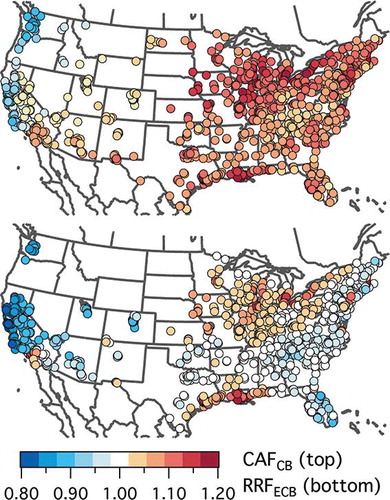
Figure 9. Simulated average daytime NOX as a function of average daytime VOC at ozone monitoring sites for the A1B_US_Met case. Data points are color coded based on the ratio of the average daily maximum 8-hr O3 from the A1B_US_M and A1B_US_Met cases. The size of each data point represents the ratio of average daytime organic nitrates (RNO3) concentration in the A1B_US_M and A1B_US_Met cases (color figure available online).
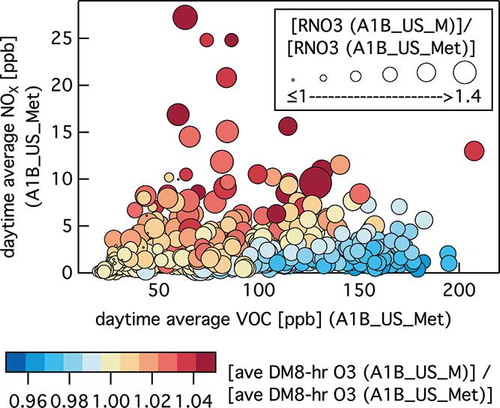
Figure 10. (a) Comparison between CAFC and CAFCB ( Equationeqs (2) and Equation(3)), when future anthropogenic emissions are used (A1B_US_M and A1B_US_Met cases), and when current anthropogenic emissions are used (A1B_M and A1B_Met cases). (b) Comparison between RRFE from Equationeq (1) when the RRF is calculated under the current climate (CD_Base and FD_US cases) and under the future climate (A1B_Met or A1B_M and A1B_US_Met and A1B_US_M cases, respectively).

Figure 11. Comparison of the climate adjustment factor (CAFCB) from this study with that calculated from the work of CitationAvise et al. (2008) and CitationChen et al. (2009), when current anthropogenic emissions are used and biogenic emissions are allowed to change with the future climate (i.e., alternate CAF methodology is used).
